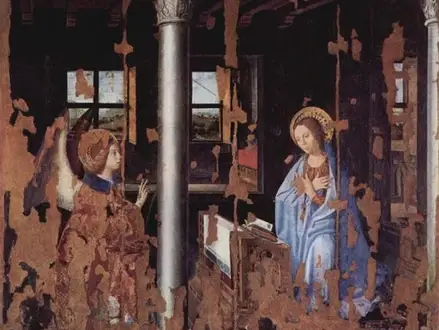Title of Artwork: “Annunciation”

Artwork by Antonello da Messina
Year Created 1474
Summary of Annunciation
Italian Renaissance artist Antonello da Messina painted The Annunciation in 1474. Located in the heart of Syracuse’s historic district, the Bellomo Palace Regional Gallery houses it.
All About Annunciation
For the Santa Maria Annunziata church in Palazzolo Acreide, a priest named Giuliano Maniuni and Antonello Maniuni signed a contract in August 1474 to carry out the project.
Enrico Mauceri, an employee of the Archaeological Museum of Syracuse, rediscovered the work in 1897 and documented it. In 1902, a document identifying Antonello as the author was discovered.
In 2006, work was completed to restore the painting, which had fallen into disrepair.
Two columns separate the right half of the painting (which depicts the Virgin) from the left half of the painting, setting the scene in a small room with a decorated beamed ceiling (with the Angel).
As depicted in Flemish paintings of the 16th and 17th centuries, two windows can be seen on the background wall, while another can be seen on the right in another room.
As in Antonello’s other works, the objects and furnishings are meticulously rendered. The prie-dieu on which she is kneeling, the vase with a blue and white decoration in the foreground, and the Virgin’s bed in the background room are all examples (now damaged).
The dove of the Holy Spirit, sent by God through the open window, landed on Mary’s hand as she crossed her arms. She’s dressed in all-red with a blue mantle.
Damask-decorated angel blesses the Virgin with a traditional lily, which is hidden by an altar column. A blue diadem, pearls, and a ruby adorn the long, blonde haired face. These are typical details of the Flemish school.
Information Citations
En.wikipedia.org, https://en.wikipedia.org/.

























